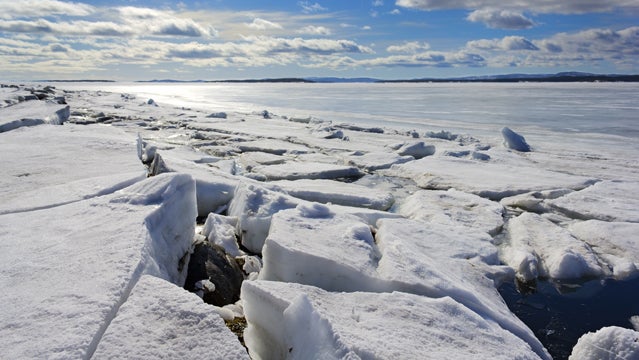If you fall through thin ice on a lake and don’t do anything to self-rescue in the first few minutes, you are going to die. This is not a shocker, but what might surprise you is what is most likely to kill you. It isn’t hypothermia.
Dr. Howard Donner knows hypothermia. The co-author of has been an Everest expedition doctor, spent three seasons as a rescue doctor for National Park Service on Denali, was a NASA medical consultant, and is currently the producer of .
Donner regularly lectures on surviving hypothermia and frostbite and has a series of action items that he lays out for people who fall through ice. Donner’s initial suggestion: Don’t succumb to cold shock.
“It sounds silly, but it’s really important that for the first moment you do everything you can not to drown,” says Donner.
He says you have a very short period, about a minute, to get your breathing under control and take off a backpack, skis, or any other gear that is going to drag you down. If you were on the ice with a partner, Donner suggests you scream like hell right away to make sure that partner knows you are in trouble before they ski out of hearing distance.
After getting your initial cold shock under control Donner stresses acting fast. “Neuromuscular cooling, a.k.a swim failure, will cause you to drown long before hypothermia sets in.” Donner says you have a phase of roughly three to five minutes dependent on person—with as many as 10 minutes— before cold incapacitation makes it impossible to swim. In these minutes you need to put everything you have into getting out.
“Don’t modulate your self rescue,” says Donner. “Don’t panic, but do it right away.” If you don’t get out now you are never going to.
Since time is clearly of the essence, it is important to be intelligent about affecting your own rescue. Your first order of business is to figure out your best exit point. While there are many potential options dependent on individual situations, Donner offers that getting back to where you fell in is often your best option.
“You know the ice was strong enough to support you until the moment you broke through,” says Donner. Once you have found where you are going to exit Donner says that using something sharp that will give you purchase on ice—like the teeth of a snowshoe or the edge of a ski—might be helpful when dragging yourself out.
When you do get to the edge, Donner heavily stresses exiting the water properly. “Don’t try and pull yourself out of the water like you’re pulling yourself out of a swimming pool,” says Donner. “Simultaneously kick and pull your way out horizontally—like a seal getting out of the water onto ice.”
Don’t assume you are safe once you get your body out of the water. “Do not stand up,” says Donner. It is critical to focus your movement at this point because if you break the ice and fall back in you probably won’t have enough energy to get out again. The smartest way to start moving towards safety is to roll. Once you feel like the ice is stronger underneath you can start slithering like a lizard. Eventually get onto your hands and knees and crawl for a while before finally getting to your feet.
If you don’t get out of the water in those three to five minutes, there is still hope. “You won’t die of hypothermia for at least an hour, so you need to find a way to keep your airway above water if you go unconscious,” says Donner. He suggests trying to freeze your wet arms or clothing on to the ice if you can make it to an edge and if the weather is very cold. Then you have an hour or two to wait and hope someone comes to rescue you.
As horrific as falling in the ice may be, you have minutes to self rescue and hours before dying of hypothermia. Knowing this and using this time wisely greatly increase your odds of saving your own life.


